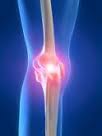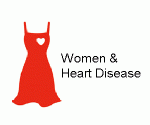The Institute for Women's Health Research blog was recently recognized for its excellence in editorial content to the health student world by KwikMed, one of two fully licensed online pharmacies in the USA. A panel of judges reviewed hundreds of different sites from across the internet before hand picking the best 18. According to the panel: The aim of this blog is to make some of the biggest issues in women's health research more accessible in the modern world and speed up the time it takes for scientific research discoveries to impact women's health and well being in everyday life. Based at Northwestern University, hot topics include breast cancer, pregnancy, sex differences and weight managment. This blog brings to light important pieces of legislation that relate to women's health such as aspects of the Affordable Care Act. A great blog for women's health medical practitioners and interested students across America. To view the other winners, click HERE.
 Research has shown that sex (male vs female) as a variable contributes to differences in the safety and efficacy of drugs, biologics, and devices. Biologics include vaccines and plasma. Devices can range from drug eluting stents and pacemakers to implants and contact lenses.
Research has shown that sex (male vs female) as a variable contributes to differences in the safety and efficacy of drugs, biologics, and devices. Biologics include vaccines and plasma. Devices can range from drug eluting stents and pacemakers to implants and contact lenses.
To better understand the biologic basis for sex differences, women's organizations have been advocating for the participation of women in clinical trials. Several federal offices dedicated to women's health have also worked to ensure mandates that require inclusion of women in federally funded studies are met. Unfortunately, many privately funded researchers are not mandated to include women, though some have learned the wisdom of doing so. When both sexes are represented in preclinical (animal) and clinical (human) research, a better understanding of the mechanistic basis for disease susceptibility and response to therapy can be achieved. This is the first step to personalized medicine.
When we speak of 'sex', we are talking about biology, i.e., the physical characteristics that make us male or female. 'Gender' refers to the differences between man and women due to cultural or social variations in a particular sex (feminine vs. masculine). Both are important when we do research.
So where do we stand today? A recent Institute of Medicine report found that women were less than 40% of many research study populations. When it comes to preliminary animal research (which is used as a basis for future human studies) the data is even worse. Only 22-42% of studies published in journals on neurosciences, endocrinology, physiology, pharmacology, reproductive medicine and biology reported the sex of the experimental animals. Furthermore, even when both sexes are included, rarely do researchers report the differences in outcomes by sex. 
So what can we do? Participate in a clinical trial if you have an opportunity. If your doctor prescribes a medication or procedure that is relatively new, you might ask if the studies included women. There is an unexplained complacency among the public that research is fairly distributed among the sexes. The truth is, we still have lots to learn about women-specific health.
 A Mayo Clinic orthopedic surgeon suspects that the nagging pain and inflammation that women can experience in their knees may be different from what men encounter, and she has been chosen to lead a novel U.S.-Canadian study to explore the question. The Society for Women’s Health Research (SWHR) has awarded a group of researchers a grant to lead a pilot project to understand whether biological differences between men and women affect the incidence and severity of knee osteoarthritis. Mary I. O’Connor, M.D., chair of the Department of Orthopedic Surgery at Mayo Clinic’s campus in Florida, will be the study’s principal investigator.
A Mayo Clinic orthopedic surgeon suspects that the nagging pain and inflammation that women can experience in their knees may be different from what men encounter, and she has been chosen to lead a novel U.S.-Canadian study to explore the question. The Society for Women’s Health Research (SWHR) has awarded a group of researchers a grant to lead a pilot project to understand whether biological differences between men and women affect the incidence and severity of knee osteoarthritis. Mary I. O’Connor, M.D., chair of the Department of Orthopedic Surgery at Mayo Clinic’s campus in Florida, will be the study’s principal investigator.
Osteoarthritis, characterized by the breakdown of cartilage in the joint resulting in stiffness and pain, is the most common form of arthritis. It affects approximately 27 million Americans.
“Knee osteoarthritis is a leading cause of disability in the U.S. and women have greater pain and reductions in function and quality of life from this condition than do men,” Dr. O’Connor says. “Knee osteoarthritis is also more common in women than men.”
While the underlying mechanisms for differences in knee osteoarthritis between men and women are not yet known, recent studies have indicated sex differences at the cellular and molecular levels may influence development of the disease, she says. Answers could provide valuable clues for more effective treatment and possible prevention, Dr. O’Connor says.
The study will examine a variety of human tissues normally discarded during total knee replacement surgery that is performed for severe osteoarthritis. The tissues will be analyzed for possible differences in pain fibers and hormone and vitamin D receptors between female and male patients.
“Our study will be the first to explore if there are true biological differences which result in women having this increased disease burden,” Dr. O’Connor says.
Source: Mayo Clinic.
NOTE: Another study being conducted at Northwestern University is also looking at knee osteoarthritis progression from structural a perspective, e.g., hip muscle strength and knee instability. See our earlier blog on this study by clicking HERE.
U.S. Female college graduates have a median starting salary offer 17% lower than male college graduates according to a new  National Association of Colleges and Employers. The report found that females with new bachelor degrees were offered an average of $36,451 compared to $44,159 for their male counterparts. Even when salary is adjusted by college major (14 were included), men come out ahead in all except two areas: engineering and liberal arts/humanities. Report author Edwin Koc noted that while gender pay disparities are often linked to women more frequently leaving the work force, he did not feel that was the cause in this study.
National Association of Colleges and Employers. The report found that females with new bachelor degrees were offered an average of $36,451 compared to $44,159 for their male counterparts. Even when salary is adjusted by college major (14 were included), men come out ahead in all except two areas: engineering and liberal arts/humanities. Report author Edwin Koc noted that while gender pay disparities are often linked to women more frequently leaving the work force, he did not feel that was the cause in this study.
Just when you begin to believe work discrimination is over when it come to sex and gender, another report comes out that questions the progress women have made when it comes to pay equity. When the Equal Rights Amendment (ERA) to the U.S. Constitution failed to pass in the mid-70s many felt that progress was still being made in areas like sex harrassment, access to formerly male dominant fields, etc. and took their placards home. Now, with the economy on the downturn, perhaps it is time to lift up those placards again and fight against fiscal discrimination for women!
Age related macular degeneration (AMD) is a medical condition in primarily older adults that results in a loss of vision in the center of the visual field (the macula) because of damage to the retina in the eye. AMD makes it difficult or impossible to read or recognize faces, although enough peripheral vision remains to allow other daily activities like eating and cooking.

Typical view for someone with AMD
A new study done by researchers at Brigham and Women's Hospital and Harvard Medical School collected data including diet from 38,022 women who were not diagnosed with AMD. After 10 years, they confirmed 235 cases of AMD. After adjusting for age and treatment, they found that the women who consumed the most omega 3 fatty acid (found in fish) has a 38% lower risk of developing AMD. In terms of fish intake, they found that consumption of one or more servings of fish per week, when compared to less than one serving per month, was associated with a 42 percent lower risk of AMD. The full article is published in the Archives of Ophthalmology.
I read another study done on women in Australia that found a similar result and I can't help but wonder if these results would be found in men, too. My father (as his father) has AMD and he has lived in Florida on the Gulf for more than 40 years. An avid fisherman, he and my mom ate fish several times a week but it didn't seem to stop him from getting AMD? I wonder if family history out trumps omega-3 consumption. This is another example of why sex-based research (both men and women) is so important!
 March is Women's History Month in the USA--a good time to reflect on the status of women today. Here are a few facts from the U.S. Census Bureau:
March is Women's History Month in the USA--a good time to reflect on the status of women today. Here are a few facts from the U.S. Census Bureau:
- U.S. Women outnumber men 157.2 million vs. 153.2 million. Twice as many women are older than 85 compared to men.
- The median annual income for full time working women is $36,278 in 2009, up 1.9% from 2008. Women now earn 77 cents for every $1 earned by men.
- The highest ratio of women to men earnings are in Washington DC where women earn 88% of what men make.
- Number of women over age 25 with bachelor degrees or more education in 2009 is 29.9 million compared to 28.7 million men. Women outrank men in all educational attainment levels except professional and doctoral degrees.
- 55% percent of current college students are women.
- There are 7.8 million women-owned businesses in 2007. Women owned 29% of all non-farm businesses.
- 66% of female citizens 18 and over reported voting in the 2008 election. 62% male counterparts voted.
- More women (23.9 million) worked in the education, health and social services business than in any other fields.
- 14% of the armed forces are women as of September 2008.
- Among married couples, 20.7% of the women earn $5000 more than their husbands.
- 5 million women are stay-at-home mothers (where spouse is in the labor force); 154,000 men are stay-at-home dads.
National Women's History Month dates back to March 8, 1857, when women from New York City factories staged a protest over working conditions. It was expanded to Women's History Week in 1981, and then expanded to a month in 1987. The trigger issue in 1857 was poor working conditions, what do you think the key issues are for women today?
 Women with peripheral artery disease (PAD) lose ability to walk short distances and climb stairs sooner than men.
Women with peripheral artery disease (PAD) lose ability to walk short distances and climb stairs sooner than men.
Peripheral arterial disease occurs when plaque builds up in the arteries that carry blood to your head, organs, and limbs. Plaque is made up of fat, cholesterol, calcium, fibrous tissue, and other substances in the blood.When plaque builds up in arteries, the condition is called atherosclerosis. Over time, plaque can harden and narrow the arteries. This limits the flow of oxygen-rich blood to your organs and other parts of your body. PAD usually affects the legs, but also can affect the arteries that carry blood from your heart to your head, arms, kidneys, and stomach. This article focuses on PAD that blocks arteries going to or in the legs.
Small calf muscles may be a feminine trait, but for women with PAD they’re a major disadvantage. Researchers at Northwestern Medicine point to the smaller calf muscles of women as a gender difference that may cause women with PAD to experience problems walking and climbing stairs sooner and faster than men with the disease. The study was published in the February 2011 issue of the Journal of the American College of Cardiology.
Peripheral artery disease affects eight million men and women in the United States. The disease causes blockages in leg arteries, and patients with PAD are at an increased risk of having a heart attack or stroke, said Mary McDermott, M.D., professor of medicine and of preventive medicine at Northwestern University Feinberg School of Medicine and physician at Northwestern Memorial Hospital.
McDermott and a team of researchers observed 380 men and women with PAD for four years, measuring their calf muscle characteristics and leg strength every year. Oxygen is needed to fuel calf muscles, and blockages in leg arteries prevent oxygen from reaching the calf muscles of people with PAD.
The researchers also tracked whether or not the patients could walk for six minutes without stopping and climb up and down a flight of stairs without assistance every year.
“After four years, women with PAD were more likely to become unable to walk for six minutes continuously and more likely to develop a mobility disability compared to men with the disease,” said McDermott, lead author of the study. “When we took into account that the women had less calf muscle than men at the beginning of the study, that seemed to explain at least some of the gender difference.”
Interestingly, men in this study experienced a greater loss of calf muscle annually than the women. But the men had more lower extremity muscle reserve than the women. That may have protected men against the more rapid functional decline women experienced. “We know that supervised treadmill exercise can prevent decline, so it’s especially important for women with PAD to get the diagnosis and engage in walking exercise to try and protect against decline,” McDermott said.
 In celebration of Women's Heart Month, the Institute for Women's Health Research featured heart disease in women in its February E-newsletter. To view this free newsletter, click Heart Disease in Women Enewsletter.
In celebration of Women's Heart Month, the Institute for Women's Health Research featured heart disease in women in its February E-newsletter. To view this free newsletter, click Heart Disease in Women Enewsletter.
 According to a new study to be published in the January 2011 issue of the Journal of Athletic Training, girls and boys report different types of symptoms after suffering sports-related concussions. Researchers studied 812 reported concussions from 100 high schools across the nation and found that girls were more likely to suffer neurobehavioral and somatic symptoms, namely drowsiness and sensitivity to noise, than boys. Male high school athletes, on the other hand, were more likely to report cognitive symptoms, particularly amnesia and disorientation, than girls. The author is Dawn Comstock from the Center for Injury and Research Policy. Further research is needed to confirm and further define these findings.
According to a new study to be published in the January 2011 issue of the Journal of Athletic Training, girls and boys report different types of symptoms after suffering sports-related concussions. Researchers studied 812 reported concussions from 100 high schools across the nation and found that girls were more likely to suffer neurobehavioral and somatic symptoms, namely drowsiness and sensitivity to noise, than boys. Male high school athletes, on the other hand, were more likely to report cognitive symptoms, particularly amnesia and disorientation, than girls. The author is Dawn Comstock from the Center for Injury and Research Policy. Further research is needed to confirm and further define these findings. Women who report having high job strain have a 40 percent increased risk of cardiovascular disease, including heart attacks and the need for procedures to open blocked arteries, compared to those with low job strain, according to research presented at the American Heart Association's Scientific Sessions 2010.
Women who report having high job strain have a 40 percent increased risk of cardiovascular disease, including heart attacks and the need for procedures to open blocked arteries, compared to those with low job strain, according to research presented at the American Heart Association's Scientific Sessions 2010.
In addition, job insecurity -- fear of losing one's job -- was associated with risk factors for cardiovascular disease such as high blood pressure, increased cholesterol and excess body weight. However, it's not directly associated with heart attacks, stroke, invasive heart procedures or cardiovascular death, researchers said. Job strain, a form of psychological stress, is defined as having a demanding job, but little to no decision-making authority or opportunities to use one's creative or individual skills.
"Our study indicates that there are both immediate and long-term clinically documented cardiovascular health effects of job strain in women," said Michelle A. Albert, M.D., M.P.H., the study's senior author and associate physician at Brigham and Women's Hospital, Boston, Mass. "Your job can positively and negatively affect health, making it important to pay attention to the stresses of your job as part of your total health package."
Researchers analyzed job strain in 17,415 healthy women who participated in the landmark Women's Health Study. The women were primarily Caucasian health professionals, average age 57 who provided information about heart disease risk factors, job strain and job insecurity. They were followed for more than 10 years to track the development of cardiovascular disease. Researchers used a standard questionnaire to evaluate job strain and job insecurity with statements such as: "My job requires working very fast." "My job requires working very hard." "I am free from competing demands that others make."
The 40 percent higher risks for women who reported high job strain included heart attacks, ischemic strokes, coronary artery bypass surgery or balloon angioplasty and death. The increased risk of heart attack was about 88 percent, while the risk of bypass surgery or invasive procedure was about 43 percent.
"Women in jobs characterized by high demands and low control, as well as jobs with high demands but a high sense of control are at higher risk for heart disease long term," said Natalie Slopen, Sc.D., lead researcher and a postdoctoral research fellow at Harvard University Center on the Developing Child in Boston.
Previous research on the effects of job strain has focused on men and had a more restricted set of cardiovascular conditions. "From a public health perspective, it's crucial for employers, potential patients, as well as government and hospitals entities to monitor perceived employee job strain and initiate programs to alleviate job strain and perhaps positively impact prevention of heart disease," Albert said.
Source: American Heart Association (2010, November 15). ScienceDaily.
